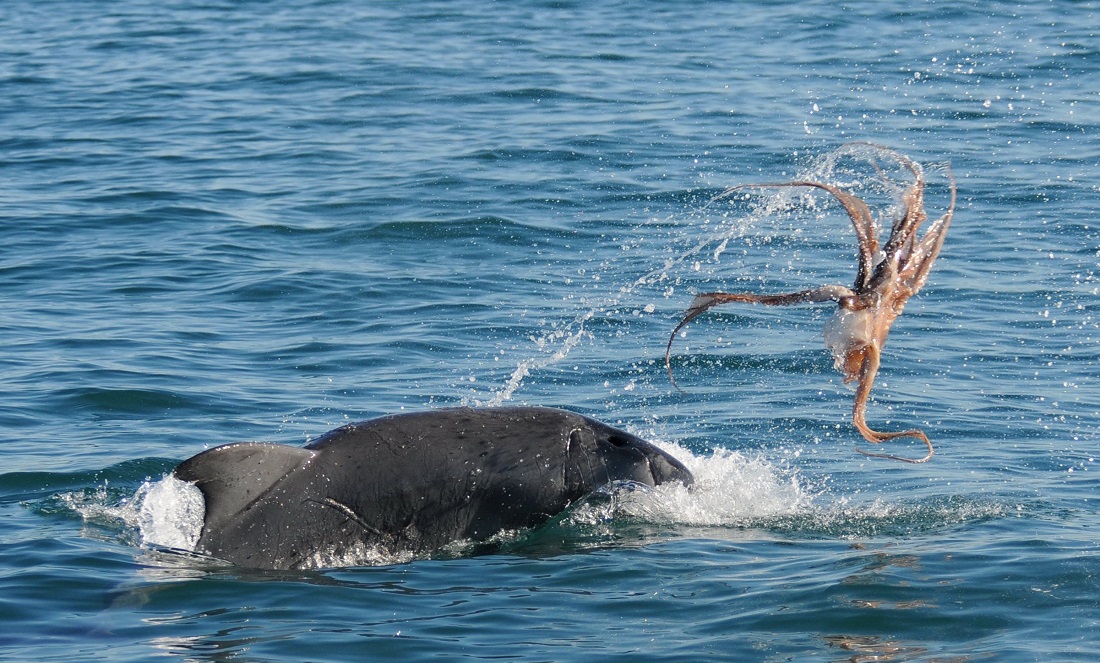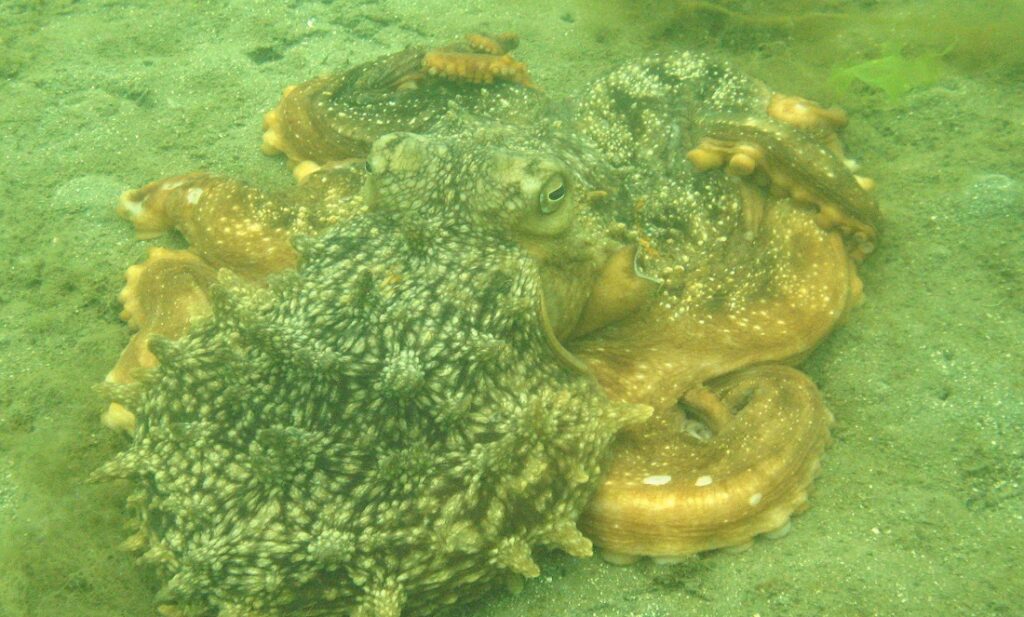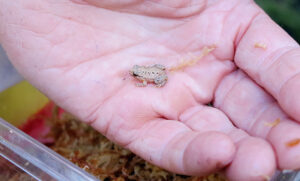Bottlenose dolphins in southwest WA use a clever technique to kill and prepare octopus.
They toss octopus into the air many times and shake it from side to side to tear it into pieces small enough to swallow.
A study published in Marine Mammal Science is the first time this octopus-handling technique has been described anywhere in the world.
A SURPRISING STRATEGY
Murdoch Uni’s Cetacean Research Unit (MUCRU) researchers documented the unique strategy while collecting data for the South West Marine Research Program, based in Bunbury.
The program is a partnership between Murdoch Uni and the Bunbury Discovery Dolphin Centre, which gathers long-term information about the local dolphin population from Busselton to north of Bunbury.
Octopus handling was recorded 45 times between 2007 and 2013.
MUCRU research associate Dr Kate Sprogis was stunned to see wild dolphins tossing octopus in the air in 2011.
“I was like, hold on, I’ve never seen this before, this is amazing,” Kate says.
“I’ve assisted on dolphin research projects in America and New Zealand and off the east coast of Australia, and I had never seen or heard of octopus handling until I came to Bunbury.”
AN EXTRAORDINARY SIGHT
Kate says there are reports of dolphins making a meal out of octopus in Mandurah, WA, and Jervis Bay, in New South Wales, but it hasn’t been recorded to the same extent.
“This could possibly be unique to temperate Australia where the octopus prey occurs,” she says.
Kate says it’s a spectacular sight.
“It’s very exciting when you do see it because it could happen up to 15 times in a row,” she says.
“They can arch half their body out of the water … and they just whack it on the surface of the water.”

A DANGEROUS DINNER
Dolphins risk their lives to eat octopus.
“They can’t just swallow it like a fish,” Kate says.
“They have to prepare it, and if they don’t prepare it sufficiently enough, they can actually get themselves in trouble.”
During the 7-year study, two dolphins suffocated while eating octopus.
An adult male dolphin known as Gilligan was found dead on a Bunbury beach in 2015 with octopus tentacles hanging out of his mouth.
“Octopus are a risky prey item, but the fact that [dolphins] have learned to do it means they must want to do it and need the nutrients,” Kate says.

“They have to prepare it, and if they don’t prepare it sufficiently enough, they can actually get themselves in trouble.”
SO WHY DO THEY DO IT?
The study raises many interesting questions about the need for further research.
Dolphins targeted octopus more often during winter and spring.
This coincides with the octopus breeding season, when they are weaker.
Dolphins may have developed a specialised skill to take advantage of this potentially seasonal prey.
“Maybe in winter there’s a lesser abundance of fish available,” Kate says.
Winter swells could help opportunistic dolphins catch octopus.
“Maybe it’s easier for the dolphins to capture the octopus when they are moving across the sand in turbid waters,” Kate says.
Female dolphins seem to have more of an appetite for octopus than males.
“It could be because, in winter, males leave the Bunbury study area so we don’t see them as often, or maybe the females need the nutrients more than males, or more females have learned the skill,” Kate says.
Further research would help unravel some of these mysteries.









